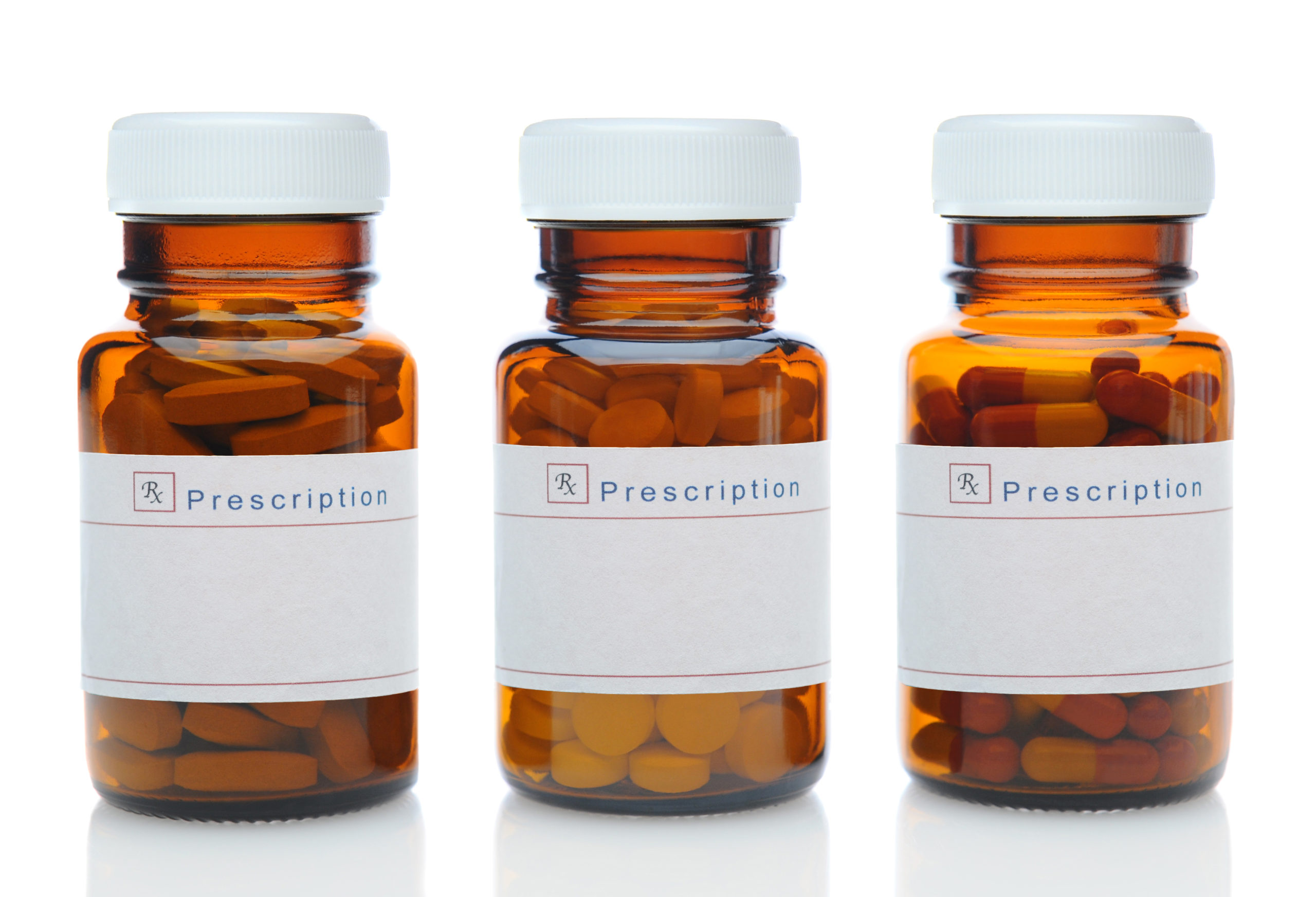“Examiners must take ‘greater care’ when examining [a trademark] application for pharmaceuticals for likelihood of confusion purposes due to the potentially serious and harmful consequences of mistakes in the selection and use of those goods.”
 The process of bringing a new pharmaceutical drug to market is time-consuming and expensive. The process of naming the new drug, while not as scientifically complex, is often no less work.
The process of bringing a new pharmaceutical drug to market is time-consuming and expensive. The process of naming the new drug, while not as scientifically complex, is often no less work.
Drugs have several names, including their chemical (or scientific), generic (or non-proprietary) and brand (or proprietary) names. The chemical name specifies the molecular structure of the drug. The generic name specifies the underlying compound of the drug and includes a “stem” that informs health care professionals about how the drug will work in the body. In the United States, generic names must be approved by the United States Adopted Names (USAN) Council and the World Health Organization (WHO) INN Programme. While the chemical and generic names may be available for use by others in the industry, the brand name—under which the new drug is typically marketed—is unique and exclusive to the brand owner and is the focus of this article.
The Search Begins
Pharmaceutical companies can take years to select the right brand name for a new drug. Starting with lists of dozens, if not hundreds, of new name candidates, pharmaceutical companies often go through several steps to winnow the pool to a select few candidates that will be submitted to trademark and regulatory authorities for approval. Those steps typically include the evaluation of the name candidates through several levels of trademark clearance searching in databases that include trademark applications and registrations, as well as industry-specific sources, such as, by way of example and without limitation, the United States Food and Drug Administration (FDA) Orange Book, Intercontinental Marketing Services Health, Inc. (IMS) Health Pharmaceutical In-Use database, and WHO and USAN stems. Other research that may be conducted by pharmaceutical companies include linguistic checks, safety checks and market surveys and research. These searches and research are typically conducted and analyzed by experienced trademark and regulatory counsel, who use the results to identify the name candidates that have the best chance of being approved. In so doing, it is key to understand the various ways in which the name candidates will be scrutinized, and by which agencies.
FDA versus USPTO
In the United States, the United States Patent and Trademark Office (USPTO) and the FDA are responsible for approving new brand names for drugs. Notably, the reviews conducted by these two agencies are completely independent of one another, follow different rules, guidelines and timelines, and include examination of different databases. Approval from the FDA is required before a new drug can enter the U.S. market, whereas approval by the USPTO is not a requirement (though certainly desired). A federal registration is also not necessarily required for pharmaceutical companies to enjoy trademark protection in the United States—they may instead choose to rely, for example, on common law trademark rights.
Trademark applications are often filed with the USPTO before any filings are made with the FDA. This is because applicants can take advantage of an intent-to-use filing basis, whereby applicants can file applications based on a bona fide intent to use the trademark in U.S. commerce. Once an intent-to-use application is properly filed, the filing date of the application constitutes constructive use of the mark on or in connection with the goods in the application. This constructive use confers upon the applicant a right of priority, nationwide in effect, against any other person, with only limited exceptions. Intent-to-use applications are examined in the same manner as other applications, and can likewise be published and allowed all prior to a showing of actual use of the mark. Eventually, applicants will have to submit a statement of use, along with an appropriate specimen, in order to obtain a registration (unless the application is also based on a foreign registration). However, intent-to-use applicants have considerable time to do so—the USPTO allows up to three years to submit a statement of use after an application is allowed. Pharmaceutical companies should keep in mind that in the United States, actual use of a mark can be shown through shipment of the drug (bearing the mark) to clinical investigators during the FDA approval process. In other words, pharmaceutical companies can show use of the trademark, and therefore obtain a registration, prior to the drug hitting the U.S. market.
Filing an intent-to-use trademark application can be an effective way to preserve an early filing date, as well as to receive feedback from the USPTO as to the registrability of the mark. Although the USPTO does not cap the number of applications that can be filed, the U.S. Trademark Act, also known as the Lanham Act, does contain certain safeguards to avoid abuse of the intent-to-use system. For example, the applicant must verify in its application that it has a bona fide intention to use the mark in U.S. commerce for the goods identified in the application as of the application filing date. The applicant’s bona fide intent is measured by an objective standard. Provided that the requisite bona fide intention to use exists, pharmaceutical companies can file more than one application at a time. These applications typically include a number of backup names, that may ultimately become names that go to market, if the applicant’s first choice name is not allowed or is otherwise challenged during the USPTO or regulatory approval process.
Drug companies should be aware that the USPTO examination process for applications for pharmaceutical products is somewhat unique compared to other types of trademark applications. Examiners must take “greater care” when examining an application for pharmaceuticals for likelihood of confusion purposes due to the potentially serious and harmful consequences of mistakes in the selection and use of those goods. Likewise, in cases involving such applications at the USPTO Trademark Trial and Appeal Board, as well as its primary reviewing court, a stricter standard is applied, which may require a lesser degree of proof to establish a likelihood of confusion. As a result of this strict standard, pharmaceutical companies must take great care in their selection of new names, so as to avoid potential conflicts with confusingly similar marks that already exist on the Register. This is one of the reasons why brand names for pharmaceutical drugs often include multiple syllables and unusual letter combinations—brand owners must do what they can to distinguish their trademarks from prior trademarks and brand names in the industry in light of the heightened standard of review.
As for the regulatory review, pharmaceutical companies must submit new proprietary name applications to the FDA after certain clinical trials are conducted. This is distinguishable from the timing for trademark applications, which can be filed at any time, including prior to clinical trials. For drugs offered in the United States, brand names must be reviewed and approved by the FDA before the drug may be marketed and sold. If the new drug will be sold in foreign jurisdictions, the proprietary name will typically have to undergo a separate review by the relevant foreign regulatory authorities.
The main goal of the FDA’s review is to ensure patient safety by mitigating the potential for medication errors, in particular any confusion between the proposed new drug name and any existing drug names. In so doing, the FDA evaluates whether the proposed drug name looks like or sounds like any other pending or approved names. The FDA utilizes a Phonetic and Orthographic Computer Analysis (POCA) algorithm which assigns a numeric value to the similarity of the proposed name in appearance and sound to existing names. The FDA also conducts name simulation studies, including, for example, handwriting and dialect tests, as well as reviews of reports of medication error data. The FDA also reviews the name to assess whether it misleadingly implies efficacy or risk of the subject drug, or if it suggests a dosage form or route of administration.
You Got Your Name—But That’s Not the End
Obtaining a federal trademark registration and FDA approval for a new brand name is not the end of the naming process for drug companies. Continued care and attention are required to maintain trademark rights. Most importantly, to maintain trademark rights in the United States, the registered mark must be continuously used in U.S. commerce—if use is discontinued for three years after the date of registration without intent to resume use, it may create a presumption that the mark is abandoned, even if the registration is still active. Brand owners should also take care when renewing a registration. For example, the trademark registration may cover a broad range of pharmaceutical products. When the time comes to submit a declaration of use, which sometimes does not happen until it is time to renew the registration, trademark owners should delete any goods from the identification that they do not sell in the United States. The USPTO has instituted a Post-Registration Proof of Use Audit Program, which empowers the USPTO to request additional documentary evidence to establish use of a registered mark in connection with every good or service claimed in the registration. Compliance with the Audit Program is required, and failure to do so may result in the cancellation of the entire registration. As a result, drug companies should carefully review the entire identification of goods and services and proactively delete items that are not in use at the time of post-registration filings. Pharmaceutical companies should also monitor the market and the register and actively enforce their trademark rights where appropriate. Not only is this a good business practice, it is legally required. U.S. courts have held that a trademark owner has an affirmative duty to police its trademark.
Selecting a proprietary name for a drug that is both attractive to the market and approved by the authorities is not easy. Counsel should be involved at an early stage to avoid potential pitfalls. It is also important to have backup names selected and, if possible, backup name applications prepared and filed. Once a mark is adopted, registered and used in the market, continued effort is required to maintain and enforce U.S. trademark rights.
Image Source: Deposit Photos
Image ID:37019927
Copyright:scukrov

![[IPWatchdog Logo]](https://ipwatchdog.com/wp-content/themes/IPWatchdog%20-%202023/assets/images/temp/logo-small@2x.png)


![[Advertisement]](https://ipwatchdog.com/wp-content/uploads/2024/04/UnitedLex-May-2-2024-sidebar-700x500-1.jpg)
![[Advertisement]](https://ipwatchdog.com/wp-content/uploads/2024/04/Artificial-Intelligence-2024-REPLAY-sidebar-700x500-corrected.jpg)
![[Advertisement]](https://ipwatchdog.com/wp-content/uploads/2024/04/Patent-Litigation-Masters-2024-sidebar-700x500-1.jpg)

![[Advertisement]](https://ipwatchdog.com/wp-content/uploads/2021/12/WEBINAR-336-x-280-px.png)
![[Advertisement]](https://ipwatchdog.com/wp-content/uploads/2021/12/2021-Patent-Practice-on-Demand-recorded-Feb-2021-336-x-280.jpg)
![[Advertisement]](https://ipwatchdog.com/wp-content/uploads/2021/12/Ad-4-The-Invent-Patent-System™.png)






Join the Discussion
No comments yet.